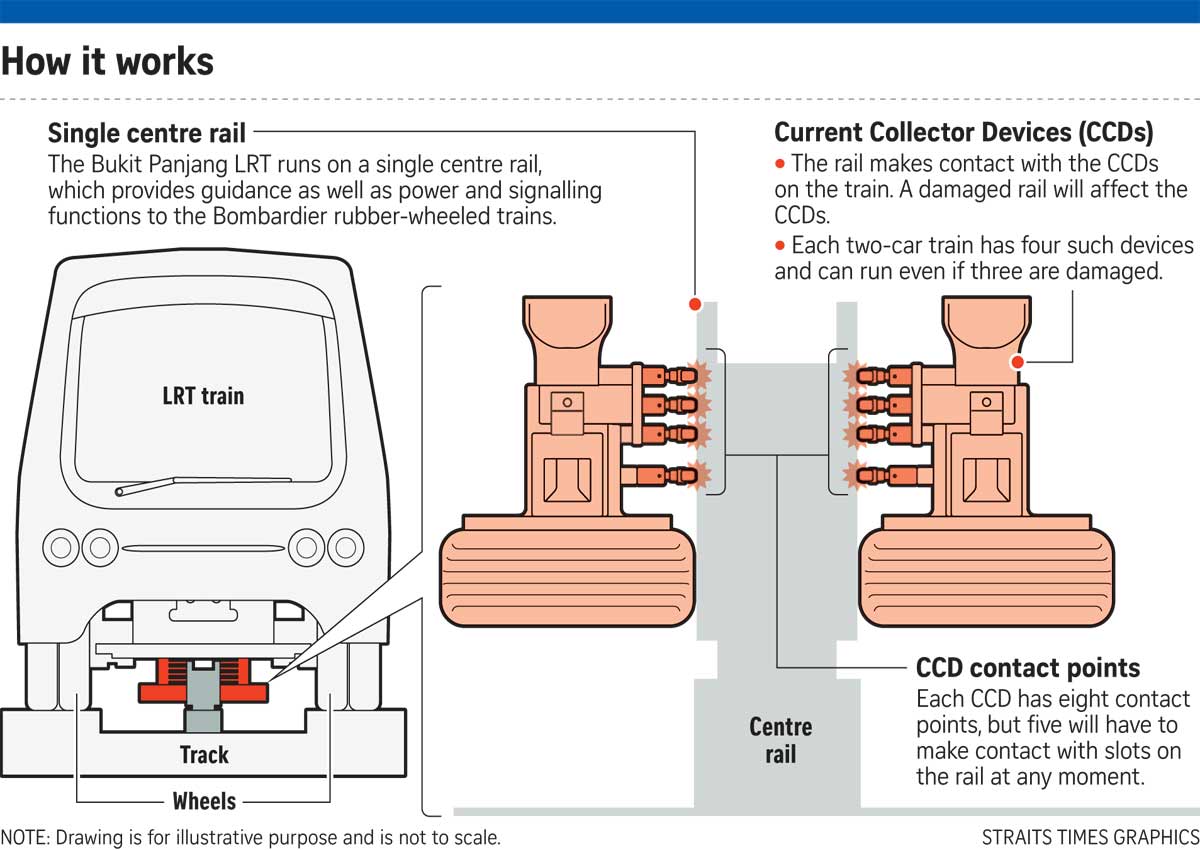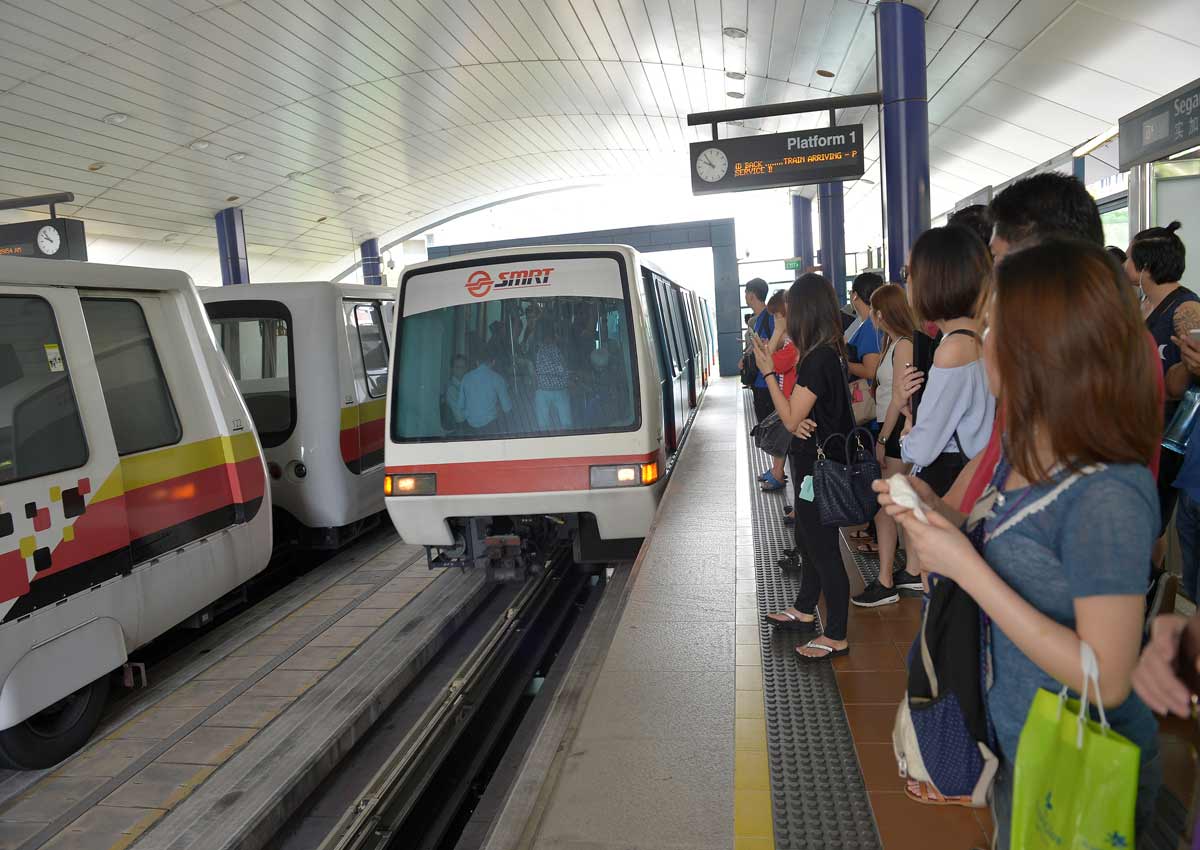The latest breakdown on the Bukit Panjang LRT appears eerily familiar.
There was a track fault on Tuesday, at around 10pm, near Choa Chu Kang station.
There was no service between the Bukit Panjang and Choa Chu Kang stations, effectively severing rail link to the MRT network that takes residents to and from other parts of Singapore.
The fault was fixed just after midnight. But in the wee hours of yesterday morning, the operator discovered that the current collector devices on 15 trains had been damaged by the track fault. These were apparently replaced.

But when service resumed, it soon became clear all was still not well. SMRT decided to shut down the 17-year-old line to do a thorough check, suspecting that the crippled trains could have done some damage to other parts of the track.
Five years ago, a similar set of circumstances had hit the North-South line, with far greater consequences.
On the evening of Dec 15, 2011, trains on Singapore’s oldest line ground to a halt, affecting tens of thousands of commuters. The fault was later traced to a damaged third rail which supplies power to the trains.
Damage sustained by trains’ current collector shoes that night, however, went undetected.
This led to another massive breakdown on the morning of Dec 17.
The Prime Minister called for a public inquiry, which found that SMRT’s maintenance lapses were the main reasons for the two breakdowns (which have since been superseded by an incident of a much larger scale on July 7, 2015, when both the North-South and East-West lines broke down, and nearly half a million commuters were stranded).
Is history repeating itself? Is SMRT still not ramping up its maintenance regimen?
It would be most troubling if that was the case.
Because that would mean SMRT has not learnt from the lessons of December 2011 – lessons documented in a voluminous report listing over 30 recommendations to prevent a recurrence.
However, this would be a premature conclusion. And a somewhat improbable one.
This is because the Bukit Panjang LRT is simply not a well-conceived or well-designed system.
From the get-go, it was never known as a paragon of reliability.
Since it began operations in 1999, it has been bedevilled by problems – ranging from a fire to a collision and a dislodged wheel. Even when it is running without a hitch, a ride on the line is not what anyone would term “smooth”.
The journey is bumpy, jerky and slow. And stops can be unusually long.
Even the newer trains are not flawless. And the system itself is impossibly intricate.
A single central rail guides, powers and provides signalling communication to the trains.
Unlike the North-South and East-West MRT lines, where the current collector devices and signalling components are separated, the ones on the Bukit Panjang LRT are integrated.
And the line runs on alternating current, not direct current like the MRT and Sengkang-Punggol LRT lines.
This means more contact points – five per current collector device assembly, including the signalling contact.
This makes for a complex and fussy system that is less forgiving.
In fact, the line has four or five incidents a year related to damaged current collector devices.
Yesterday’s disruption happened to be extraordinarily long because the damaged trains may have propagated damage along the track itself.
Saddled with such assets for 17 years, there is only one sensible thing to do: redesign the system. But that would mean shutting it down for months, maybe even a year.
Residents will not be happy. But if the revamp results in a more reliable and efficient system, they may be willing to take the short-term pain – especially if it can be eased with free bus rides in the interim.
But what if they find that the buses are more convenient and comfortable?
christan@sph.com.sg

This article was first published on September 29, 2016.
Get a copy of The Straits Times or go to straitstimes.com for more stories.






